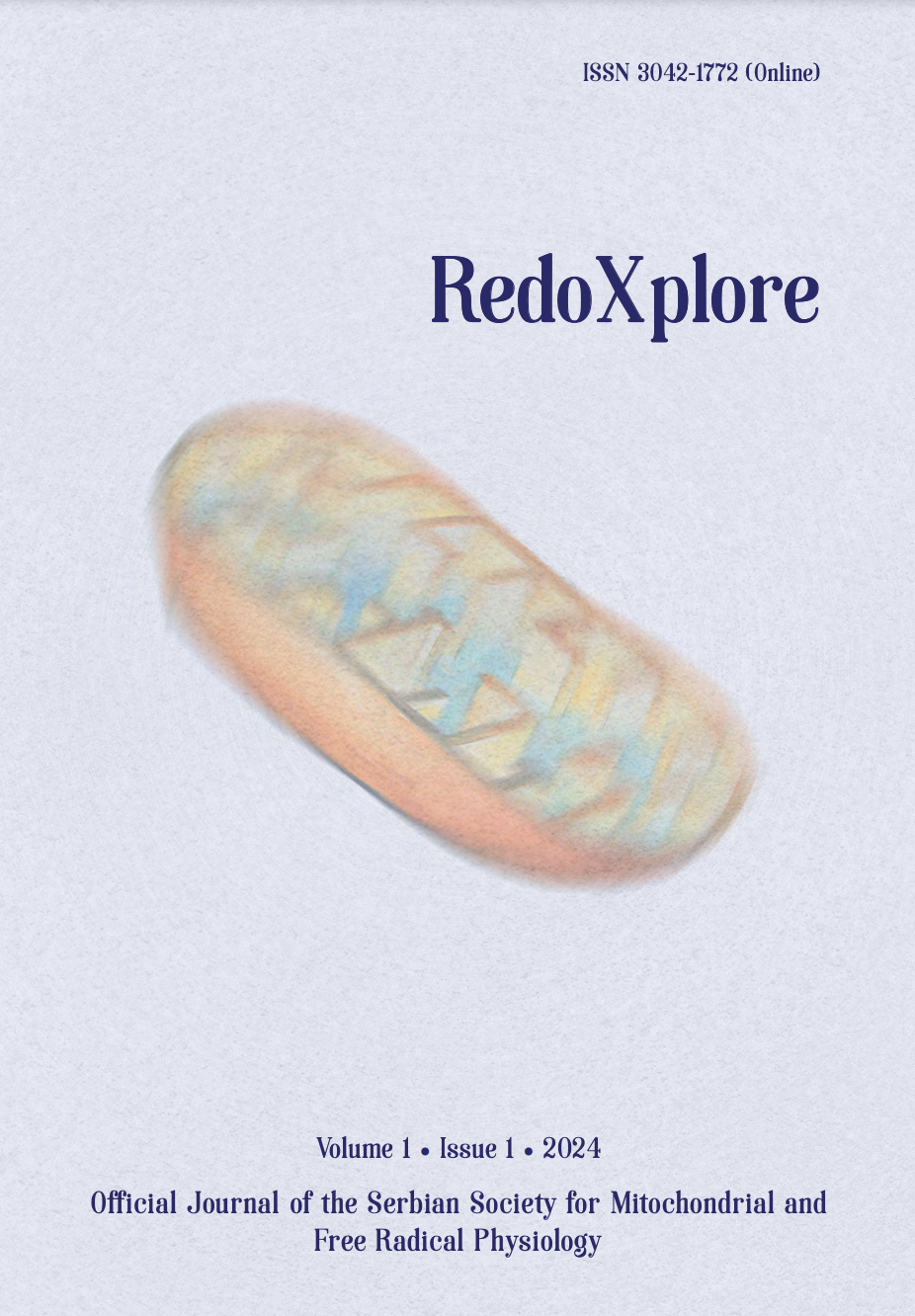
More articles from Volume 1, Issue 1, 2024
REDOX AND METABOLIC REPROGRAMMING OF BREAST CANCER CELLS AND ASSOCIATED ADIPOSE TISSUE - THE CORNERSTONES OF ADAPTIVE TUMOUR BEHAVIOUR
INSULIN MODULATES MITOCHONDRIAL STRUCTURAL AND FUNCTIONAL MOSAICISM IN BROWN ADIPOCYTES
NITRITE MITIGATES OXIDATIVE BURST IN ISCHEMIA/REPERFUSION IN BRAIN SLICES
NITRIC OXIDE, SUPEROXIDE AND PEROXYNITRITE – REDOX REGULATION OF THE CARDIOVASCULAR SYSTEM BY NITRO-OXIDATIVE STRESS AND S-NITROS(YL)ATION
DIETARY NITRATE AS PIVOT ON THE GUT MICROBIOTA-HOST REDOX COMMUNICATION
MITIGATION OF PM2.5-INDUCED CARDIOVASCULAR DAMAGE BY STATINS AND ACE INHIBITORS
Department for Cardiology 1, Molecular Cardiology, University Medical Center of the Johannes Gutenberg University Mainz , Mainz , Germany
Partner Site Rhine-Main, German Center for Cardiovascular Research (DZHK) , Mainz , Germany
Department for Cardiology 1, Molecular Cardiology, University Medical Center of the Johannes Gutenberg University Mainz , Mainz , Germany
Department for Cardiology 1, Molecular Cardiology, University Medical Center of the Johannes Gutenberg University Mainz , Mainz , Germany
Department for Cardiology 1, Molecular Cardiology, University Medical Center of the Johannes Gutenberg University Mainz , Mainz , Germany
Department for Cardiology 1, Molecular Cardiology, University Medical Center of the Johannes Gutenberg University Mainz , Mainz , Germany
Department for Cardiology 1, Molecular Cardiology, University Medical Center of the Johannes Gutenberg University Mainz , Mainz , Germany
Department for Cardiology 1, Molecular Cardiology, University Medical Center of the Johannes Gutenberg University Mainz , Mainz , Germany
Department for Cardiology 1, Molecular Cardiology, University Medical Center of the Johannes Gutenberg University Mainz , Mainz , Germany
Department for Cardiology 1, Molecular Cardiology, University Medical Center of the Johannes Gutenberg University Mainz , Mainz , Germany
Department for Cardiology 1, Molecular Cardiology, University Medical Center of the Johannes Gutenberg University Mainz , Mainz , Germany
Partner Site Rhine-Main, German Center for Cardiovascular Research (DZHK) , Mainz , Germany
Department for Cardiology 1, Molecular Cardiology, University Medical Center of the Johannes Gutenberg University Mainz , Mainz , Germany
Partner Site Rhine-Main, German Center for Cardiovascular Research (DZHK , Mainz , Germany
Department for Cardiology 1, Molecular Cardiology, University Medical Center of the Johannes Gutenberg University Mainz , Mainz , Germany
Partner Site Rhine-Main, German Center for Cardiovascular Research (DZHK) , Mainz , Germany
Editor: Bato Korac
Published: 29.08.2024.
Short oral presentations
Volume 1, Issue 1 (2024)
Abstract
Particulate matter (PM) is well recognized as the major contributor to the air pollution disease burden. Presently, the data pointing to the direct effects of PM on the cardiovascular health are numerous, but the mitigation strategies are still at the level of reduction of exposure. In the present study, we used a mouse model of real-life PM2.5 exposure treated with either a statin (atorvastatin) or an ACE inhibitor (captopril) in order to observe the potentially protective effects of cardiovascular drug treatment on the underlying mechanisms of detrimental, PM2.5-induced, cardiovascular effects. Captopril treatment mitigated the PM2.5-induced blood pressure while both drugs reduced selected markers of oxidative stress in the vasculature and heart. Both drugs were successful in mitigating the vascular oxidative stress by reducing the activation of the NADPH oxidase enzyme. In addition, both drugs were able to reverse the PM2.5-induced increase in vascular endothelin-1. The treatment also reduced the level of 3-NT positive proteins in the lung and mitigated the effects on dysregulated eNOS expression. Drugs did not mitigate the inflammatory response in the lung and in circulation with only captopril reducing the pulmonary IL-6, but not CD68 expression. In summary, ACE inhibitors can potentially mitigate the effects of PM2.5 on the vascular function and oxidative stress by lowering blood pressure and statins have a known antioxidant effect, e.g. via inhibition of NADPH oxidase. Our present data provide novel insights into possible mitigation strategies for PM2.5-induced cardiovascular disease. Since statins and ACE inhibitors represent first-line therapies for cardiovascular disease, CVD patients, e.g. with coronary artery disease, ischemic heart disease, and hypertension representing highly vulnerable groups for air pollution health effects, may benefit from pre-established therapies with these drugs to prevent additive cardiovascular damage by PM2.5 exposure.
Citation
Copyright

This work is licensed under a Creative Commons Attribution-NonCommercial-ShareAlike 4.0 International License.
Article metrics
The statements, opinions and data contained in the journal are solely those of the individual authors and contributors and not of the publisher and the editor(s). We stay neutral with regard to jurisdictional claims in published maps and institutional affiliations.






